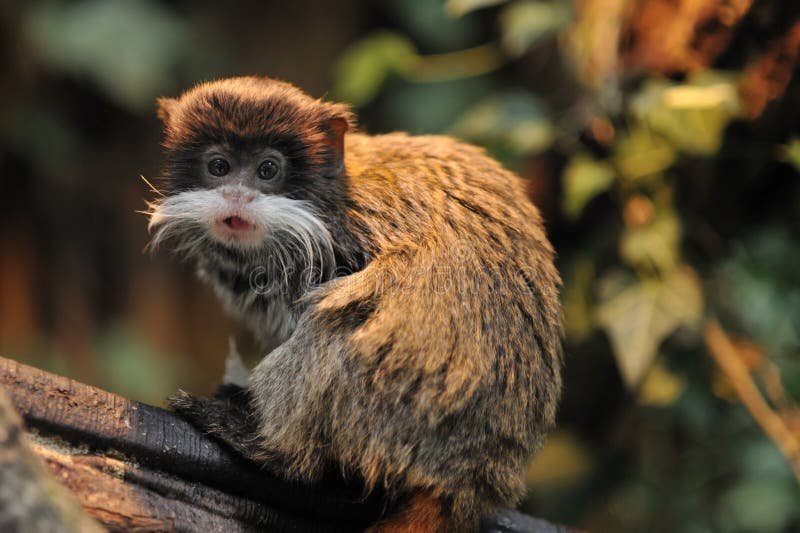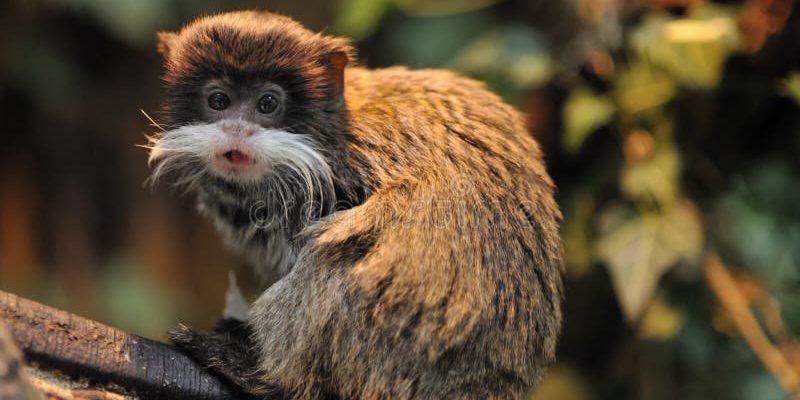
Tamarins are not just adorable; they play a crucial role in their ecosystems. They’re like the unsung heroes of the rainforest, helping with seed dispersal and showcasing unique social structures. If you’re curious about what makes tamarins so special, let me take you on a journey through ten captivating facts that reveal the wonders of these amazing creatures.
1. Tiny but Mighty
Tamarins are small in size, typically weighing between 1 to 2 pounds and measuring about 12 to 18 inches long, not including their tails. You might wonder, “How can something so small have such a big impact?” Well, despite their size, tamarins are highly social and live in groups called troops, which can range from 2 to 15 individuals. Imagine a small family unit that relies on each other for survival, protection, and social interaction.
These little monkeys thrive in trees, using their sharp claws to grip bark while they leap from branch to branch. Their physical agility allows them to navigate the dense canopies of the rainforest effortlessly. Honestly, it’s like watching acrobats perform in the treetops! Their small size is a great advantage, enabling them to access food sources that larger animals can’t reach, like insects and fruit hidden beneath leaves.
2. Colorful Personalities
One of the most striking features of tamarins is their vibrant fur. Depending on the species, you can find them flaunting colors from golden yellow to deep black. The golden lion tamarin, for example, boasts a stunning mane that earned it its regal name. On the other hand, the black tufted tamarin has distinctive black fur with striking white facial markings. These colors are not just for show; they help with social interactions and mating.
Tamarins are also known for their vocalizations. You might hear them chat away with a series of whistles, trills, and chirps. Each sound serves a purpose—whether it’s calling out to a mate or warning others of danger. So, if you think you know about monkey chatter, wait until you hear a tamarin’s chorus! It’s filled with emotion, much like a conversation with an animated friend.
3. Social Structures and Cooperation
Tamarins are incredibly social creatures, often seen barking, grooming, and playing together. They live in family groups which can include parents, offspring, and sometimes even other relatives. This tight-knit social structure fosters strong bonds among members, which is especially important for raising young.
Interestingly, tamarins practice cooperative breeding. This means that not only the parents, but also older siblings and other members of the troop help care for the young. Think of it like a community babysitting gig where everyone pitches in! This behavior increases the chances of survival for the little ones and strengthens the family unit. You might find it heartwarming to know that these tiny monkeys prioritize group well-being over individual desires.
4. Masters of Communication
Here’s the thing: tamarins are incredibly expressive. They don’t just rely on sounds; their body language speaks volumes too. When a tamarin is excited or feeling threatened, it may puff up its fur, stand tall, or engage in playful antics with others.
These gestures help convey emotions and intentions, making communication a rich blend of sounds and visuals. The troop’s dynamics can shift based on these interactions, which is a crucial aspect of their survival. Just like in human relationships, understanding each other’s feelings enhances cooperation and reduces conflicts. You might be surprised by how similar their communication can be to our own!
5. Diverse Species Galore
There are several species of tamarins, each with unique characteristics. From the common marmoset, often mistaken for a tamarin due to its small size, to the saddle-back tamarin with its distinctive fur pattern, each species brings something different to the table.
In fact, scientists estimate that there are about 15 recognized tamarin species! Some, like the black-mantled tamarin, are rare and found only in specific regions of South America. The variations in appearance, behavior, and habitat they exhibit reflects the adaptability of these little primates. Think of them as nature’s colorful puzzle pieces, each filling a unique ecological niche.
6. Diet Varieties: More Than Just Fruits
When picturing a tamarin’s diet, you might think it’s all about fruits and nuts. While they do enjoy tasty treats like ripe fruits, their meals are quite diverse. Tamarins also feast on insects, tree sap, and flowers! Their flexible diet allows them to thrive in various environments, and they aren’t picky eaters.
Sap-sucking is a special skill of some tamarin species, which involves using their sharp teeth to make small holes in trees and drink the sugary sap that oozes out. Imagine them like nature’s little baristas, crafting their sweet snacks from the trees. This dietary variety is not just a way to stay full; it helps maintain the balance of their ecosystem, as they contribute to seed dispersal through their droppings.
7. Habitat Loss and Conservation
Tamarins face significant threats due to habitat loss, primarily from deforestation and urbanization. As rainforests are cleared for agriculture and development, these tiny monkeys lose their homes and food sources. Honestly, it’s a tough situation—they need forests to thrive, and without them, their populations are at risk.
Conservation efforts have become essential in recent years. Many organizations are working to protect their habitats and raise awareness about their importance. Responsible tourism and education programs also play a vital role in ensuring that future generations can appreciate these fascinating creatures. If you care about wildlife, supporting conservation initiatives can make a real difference in tamarin populations.
8. Reproduction and Gestation
Tamarins typically have a gestation period of around 140 to 150 days, resulting in one or two babies per birth. The little ones are born with their eyes closed and rely heavily on their parents and troop for care. You might be wondering how this works in such a social structure. Well, everyone pitches in!
After birth, the mother will carry her infants while the other troop members will help with grooming and protection. This communal approach not only strengthens social bonds but also ensures that the young ones receive ample attention and care. It’s like a supportive network making sure the newest members of the family get all the love they need!
9. The Role of Tamarins in the Ecosystem
Tamarins play a crucial role in their ecosystem as seed dispersers. As they eat fruits and other plants, they spread seeds throughout the forest via their droppings. This natural process facilitates plant growth and helps maintain the biodiversity of their habitat.
Without tamarins, many plant species would struggle to reproduce and flourish. It’s a beautiful cycle of life where these small monkeys contribute to a healthy environment. The next time you think about tamarins, remember they’re not just cute; they’re vital for the ecosystems they inhabit.
10. Unique Adaptations
Tamarins have several physical adaptations that help them thrive in their environments. Their long tails, which can be as long as their bodies, assist with balance, allowing them to leap gracefully from branch to branch. Their claws, designed to cling to tree bark, add to their agility, making them adept climbers.
Moreover, their keen eyesight helps them spot food and navigate through the dense forest canopy. Picture them as little ninjas, equipped for life in the treetops! These adaptations ensure that tamarins not only survive but flourish, showcasing the resilience and creativity of nature.
In conclusion, tamarins are not just charming little creatures; they’re critical players in the ecological web. From their fascinating social structures to their vital role as seed dispersers, there’s so much more to these monkeys than meets the eye. The next time you hear about them, remember their story and the importance of protecting their habitats. After all, every small creature contributes to the larger story of our planet’s health and harmony.

